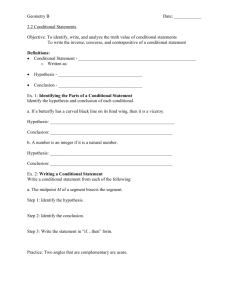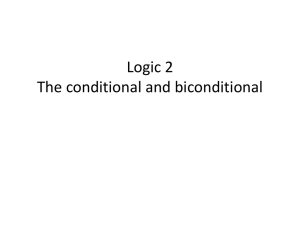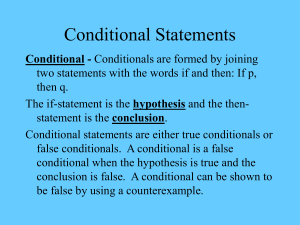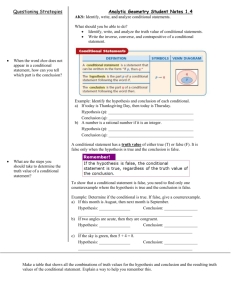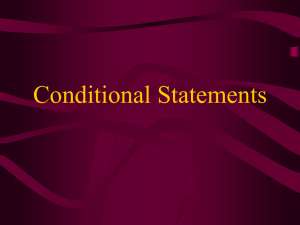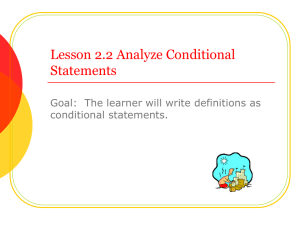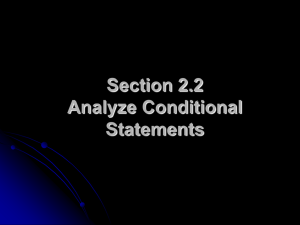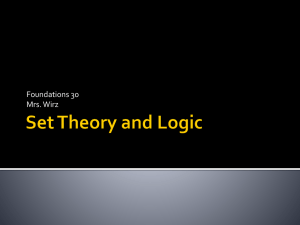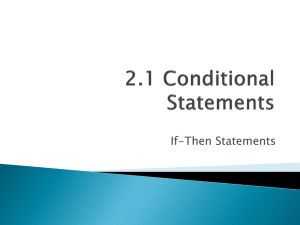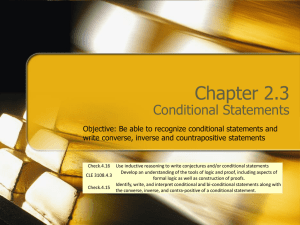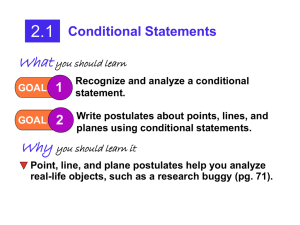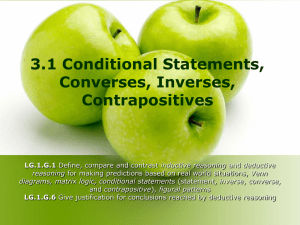File
advertisement
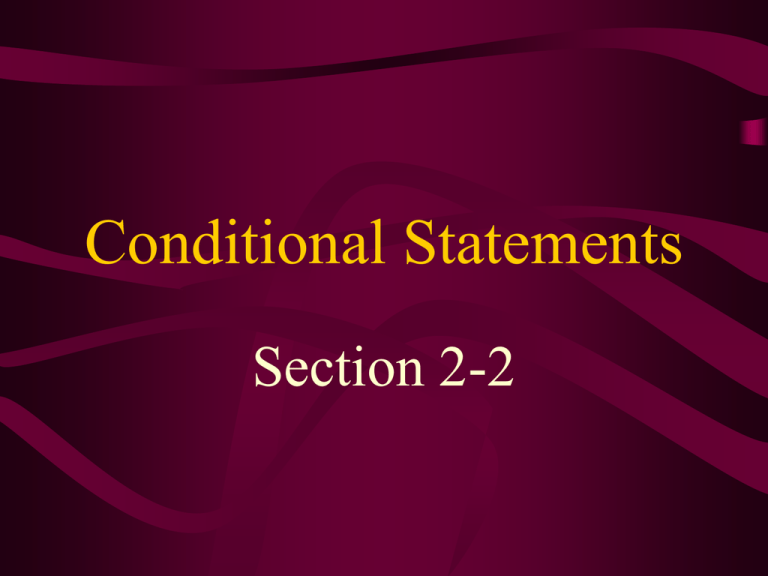
Conditional Statements Section 2-2 Objective • Students will be able to recognize conditional statements and their parts to write converses, inverses, and contrapositives of conditionals. Conditional Statements If-then statements are called conditional statements. The portion of the sentence following if is called the hypothesis. The part following then is called the conclusion. p q (If p, then q) p q If it is an apple, then it is a fruit. Hypothesis – It is an apple. Conclusion – It is a fruit. A conditional can have a truth value of true or false. Using a Venn Diagram to illustrate a conditional q p Converse q p The converse statement is formed by switching the hypothesis and conclusion. If it is an apple, then it is a fruit. Converse: If it is a fruit, then it is an apple. The converse may be true or false. Underline the hypothesis and circle the conclusion for each conditional statement, then write the converse. 1. If you are an American citizen, then you have the right to vote. 2. If a figure is a rectangle, then it has four sides. Write each sentence as a conditional statement. 1. A point in the first quadrant has two positive coordinates. If a point is in the first quadrant, then it has two positive coordinates. 1. Thanksgiving in the U.S. falls on the fourth Thursday of November. If it is Thanksgiving in the U.S., then it is the fourth Thursday of November. Using a Venn Diagram to illustrate a conditional Illinois Residents Chicago Residents If you live in Chicago, then you live in Illinois. Get a Partner! 1. Each of you need to write 5 conditional statements and draw 5 venn diagrams 2. Trade papers 3. Write the converse of each conditional statement your partner wrote. Biconditionals • Remember: If your original conditional statement is true and your converse is true, then you can write a biconditional. p↔q read as “p if and only if q” we can shorten it to “p iff q”. • When either or both of your condition and the converse is false, then you must write a counter example. Why is it false? • See page 78 for sample problems! The new stuff for today: negation – the denial of a statement (the opposite) Ex. “An angle is obtuse.” Negation – “An angle is not obtuse.” Inverse ~p ~q An inverse statement can be formed by negating both the hypothesis and conclusion. If it is an apple, then it is a fruit. Inverse: If it is not an apple, then it is not a fruit. The inverse may be true or false. Contrapositive ~q ~p A contrapositive is formed by negating the hypothesis and conclusion of the converse. If it is an apple, then it is a fruit. Contrapositive: If it is not a fruit, then it is not an apple. The contrapositive of a true conditional is true and of a false conditional is false. Truth Table p→q q→p T T T T T T T T T F F T T F F T F T T F F T F T F T T T T F F q F Contrapositive “or” Converse p Inverse “And” Conditional ~p → ~q ~q → ~p pnq pUq Which columns are congruent? These are called equivalent statements, because they have the same truth values! Assignment: • P. 93 (15-45) x’s of 3 • Ask me about the OPTIONAL project!
